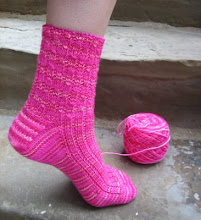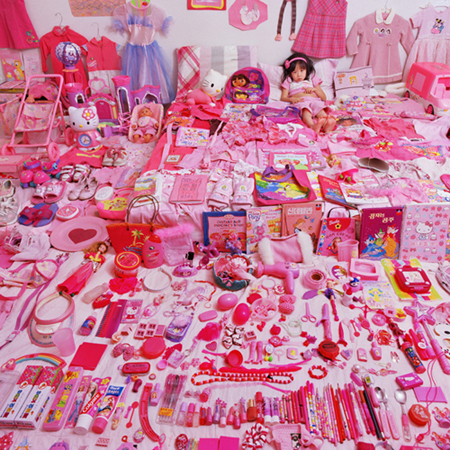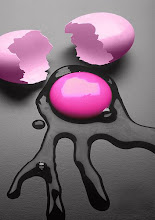The Human Be-In
In a time when war plagued a nation and strict ideals ran the common systems of government, open- minded individuals sought change. Fueled by beliefs in an utopist society, the “hippie” movement originated in the San Francisco Bay area of California in 1964. Non- conformism and acceptance of all individual differences in race, class, sex, and social status became the doctrine of peace that ignited this historical movement which would come to represent “the most authentic reaction against the American way of life, imperialism and repression of ethnic minorities,” (Breton, 2007) the country had ever seen. Derived from the word hipster, that was originally used to describe residents of San Francisco’s Haight- Ashbury district, the term “hippie” was coined to represent not just the individual participants in the fight against commonality, but also the fashion, music, television and art that sprung from this movement. Many argue that the “Human Be-In” which was held in San Francisco’s Golden Gate Park in January of 1967, was what truly introduced this American counterculture to suburbia and linked the Beat and the '60s subcultures together in nationwide eminence. First announced on the cover of the San Francisco Oracle, the “Human Be-In” gained the title, “a gathering of the tribes” by writers everywhere. A poster by Michael Bowen and Stanley Mouse that featured a holy man with a triangle superimposed over his face and a third eye as the central image, was used as a mechanism of advertisement for the event. The presence of the third eye within this image was only appropriate, for it represents an esoteric and metaphysical pathway that leads to spaces of higher consciousness and stages of enlightenment. These principles of Eastern philosophy greatly influenced the common “hippie” of the period. Allen Cohen, editor of the San Francisco Oracle and a leading voice in the nationwide underground press movement, along side his close friend Michael Bowen, an avant-garde innovative painter of the period, are most credited as the “Human Be-In” organizers. Though in its entirety, the event ran smoothly, Cohen and Bowen did experience a few impediments along the way. In the 1960’s, free assembly still required a permit. When Michael Bowen’s request for a permit was refused, he sought help from his friend, the great attorney, Melvin Belli. With a solution to Bowen’s problem, Belli sent his secretary to the city’s offices in order to ask for a birthday party permit which would enable them to host guests later that day at the Golden Gate Park (it was not really Melvin’s birthday). Thus, within five minutes the problem was solved and the secretary received one sheet of paper that allowed for the “Human Be-In” to become a part of history. Come, spoke Cohen, and immerse yourself within “a union of love and activism previously separated by categorical dogma and label mongering… now the evolving generation of American youth and the humanization of the American man and woman can begin in joy and be embraced without fear, dogma, suspicion or dialectical righteousness” (Cohen, 1967). Allen Ginsberg once called Cohen “the most convincing man he had ever known who could charm the press and turn on a square.” Due to the fact that Cohen was friends with many of the “Beat” poets, he was able to bring them together on the forefront of the “Be-In” stage. Though Cohen had the upper hand in the event’s planning, he once stated that Bowen provided the “organizing energy” that shaped its character and made it the great success and worldwide media attraction that it was. The mass of people (some say 20,000 and some say 30,000) that accumulated in Golden Gate Park on this historical day, lured speakers such as Timothy Leary, who still stands as a modern pioneer for the utilization of “psychedelic” drugs, Allen Ginsberg, whom many believe to be the father of the movement, and Dick Gregory, the first comedian to successfully perform for both African Americans and whites- preaching his beliefs in civil right activism. Bands such as The Grateful Dead and Jefferson Airplane also showed up to share their music as a vehicle for change. In addition, The Hell's Angels safeguarded the generator cables that someone had slashed. Thus, this day quickly took full form after Timothy Leary’s famous words, “turn on, tune in, drop out.” The “Human Be-In” was so essential to the overall “hippie” movement, because it was the first time that the “Berkeley radical hippies,” who were very much against the United State’s Vietnam War policies, and the “Haight- Ashbury hippies,” who urged peaceful protest and joyful celebration, came together and overlooked their philosophical oppositions. With Allen Ginsberg’s writings in which he brought to light the absurdity of materialistic objects and conformity, ringing in the air, individuals were able to connect on a higher level and become one with the earth and humanity. The “Be-In” primarily focused on the key factors that embodied the counter culture: personal empowerment, cultural and political decentralization, higher consciousness (aided by the usage of “psychedelic” drugs such as LSD), communal living, and ecological awareness. Together, all of the event’s participants stood up against societal “norms,” rejected middle- class morality, and questioned authority. Topics such as civil rights, women's rights, and consumer rights, were discussed in opinionated detail. Not long after, did the formation of alternative media known as the "underground" newspapers and radio stations, take full force. These stations saw significant changes in the way of music, art, and technology. Like the “Love Pageant Rally” that came before it, the “Human Be-In” encouraged people to celebrate “the beauty of the universe and the beauty of being” (Cohen, 1966). Participants of the gathering were told to bring: food, beads, costumes, flags, bells and flowers. In addition to poetry readings and musical performances, the “Be-In” also saw the likes of a parachutist drop like an angel from the sky and people chanting mantras in search of serenity. The fact that so many diverse individuals were able to find a common purpose worth fighting for (peace, community, justice and love) inspired many participants of the time who believed that the entire human race could come together and thrive as one entity. In truth, they believed that the empowerment and acceptance of these principles could change the world and put an end to the war in Vietnam. To this day, many are still astonished at how such a mass of people enjoyed peace and fluidity without the presence of a single policeman. Not soon after the “Human Be-In,” were there “Be-Ins’ of all sorts from New Mexico to France. Participants in the event left feeling spiritual connection, a gained sense of enlightenment, and confidence that the psychedelic and political aspects of their cultural movement “would continue to grow hand in hand everywhere” (Wikipedia, 2). Overall, this gathering of believers in a “union of love and activism” (Brugmann, 2) proved very successful for the era and lead to “The Summer of Love.” Participants did indeed turn the world on to their motives, and attract the spotlight from Vietnam and Washington to Haight- Ashbury (for at least a day). When Richard Alpert, a participant in the occasion and retired professor from Harvard University was asked what he thought about the day, he replied, “it’s a hell of a gathering… it’s just being, humans being… being together, yeah… it’s a human be-in.” As an embodiment of the democratic ideals that fabricate the American way of life, the “Human Be-In” stood and continues to stand as just another thread that has woven a past history of California together- one that includes tumultuous undertakings and peaceful demonstrations of varying belief systems.








No comments:
Post a Comment